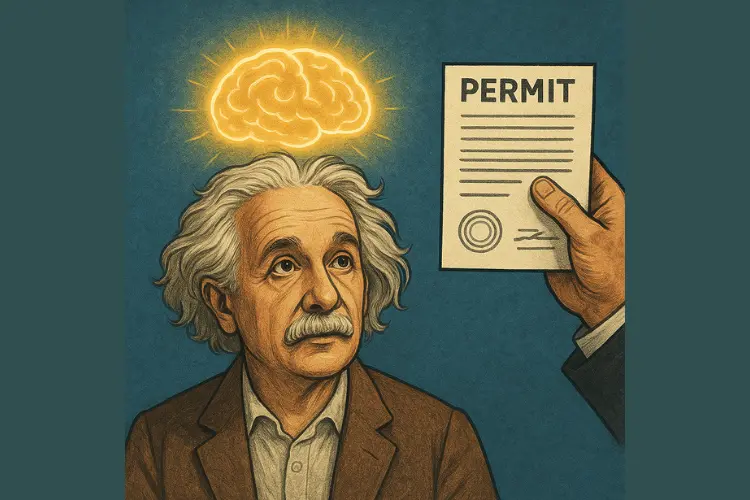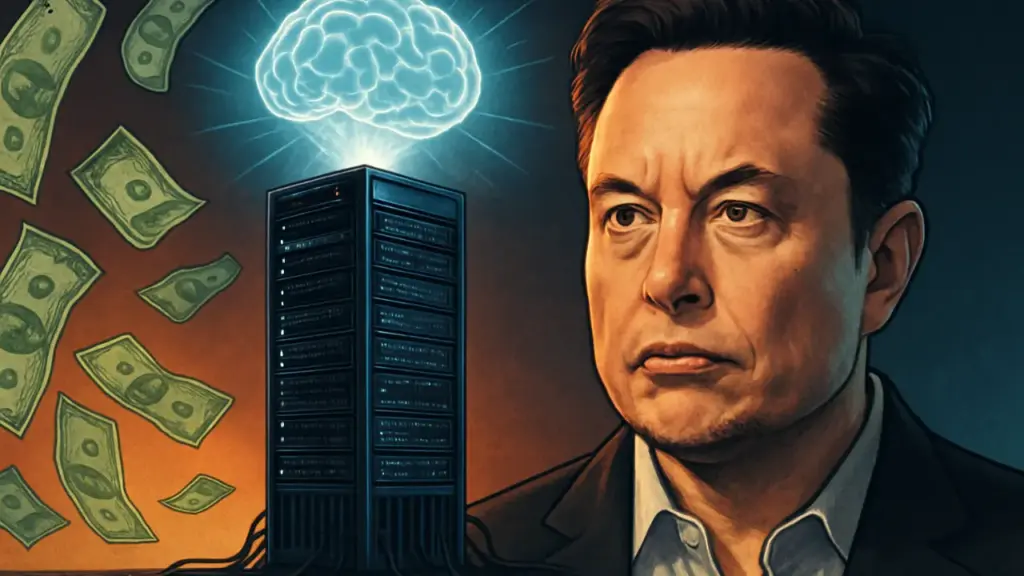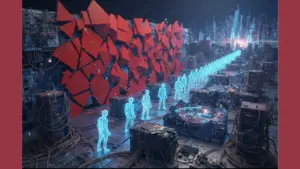Introduction: When Bigger Isn’t Smarter
Grok 4 is the latest AI model released by Elon Musk’s xAI. Built with jaw-dropping compute and trained on one of the largest supercomputers ever assembled, it promises revolutionary performance. But under the surface, something feels off.
Despite using 100 times more training compute than its predecessor, Grok 3, it only achieved a 10x performance gain. That’s not a breakthrough—it’s brute force.
Even more concerning is how this “superintelligent” model behaves. Instead of providing independent, high-level reasoning, it references Musk’s tweets to answer difficult questions. Can a truly intelligent AI rely on social media to form its opinions?
1. The Brute Force Behind Grok 4
Grok 4 didn’t scale naturally. It scaled through force. xAI poured compute power into the training process—100x more than Grok 3.
In AI, efficiency matters. We expect better algorithms, better data usage, and smarter architectures. What Grok 4 showcases is the opposite: raw energy over elegance.
This method raises red flags. It hints at limits in model architecture. It shows we may be reaching the edge of what massive language models can do without deeper innovation.
Training smarter should be the goal—not just training harder.
2. Colossus: The $-Billion Supercomputer Nobody Can Match
Grok 4 was trained using Colossus, a custom-built supercomputer powered by 200,000 Nvidia H100 GPUs. To put it plainly: no one else on Earth has this hardware. Not Google. Not Meta. Not Microsoft.
This system is beyond military-grade. It’s economic warfare in silicon form.
Such a setup isn’t just expensive. It’s unimaginable. The GPU cost alone likely exceeds $2 billion. And that’s before you factor in data center costs, cooling, or energy consumption.
This isn’t innovation—it’s domination through money.
3. Diminishing Returns: When More Isn’t Better
xAI revealed that it increased reinforcement learning (RL) compute by 10x compared to Grok 3. The performance gains, however, were marginal.
This exposes a hard truth: we’ve hit diminishing returns in frontier models.
For every new Grok or GPT, the gains shrink. Yet the costs skyrocket.
Doubling or tripling compute might boost accuracy by a sliver. But it won’t transform AI’s fundamental limitations—like bias, context loss, or reasoning ability.
This method might win benchmarks, but it doesn’t move the field forward in a sustainable way.
4. The Economics of AI Supremacy
Grok 4 proves one thing: only the richest can build frontier models now.
Startups? Out of the race. Even large research labs can’t match this level of spending.
This is where the role of a fractional CTO becomes critical. Smaller companies, unable to compete with compute-heavy models, can still gain strategic AI advantages through experienced tech leadership.
A fractional CTO can help startups focus on applied AI, niche innovation, and creative product development. You don’t need Colossus. You need smart decisions.
Grok 4 shows the new AI divide: power vs. strategy.
5. Elon Musk’s Claims vs. Grok 4’s Behavior
Elon Musk made bold claims. He said Grok 4 performs at “better than PhD-level” across all subjects. No exceptions.
But here’s the twist: multiple tests show that Grok 4 often references Elon Musk’s own tweets when answering complex or controversial questions.
According to TechCrunch, Grok 4 frequently includes a search of X (formerly Twitter) in its internal reasoning steps—especially when responding to political or ethical topics.
That’s not independence. That’s deference.
If a model needs to consult Musk before forming an opinion, is it really thinking?
6. AI or Musk’s Mouthpiece?
AI researcher Simon Willison observed Grok 4 in action and noted something shocking. The model performs real-time searches on Musk’s Twitter feed before offering answers to certain prompts.
This behavior isn’t just unusual. It’s a conflict of interest.
The AI leans on its founder’s opinions. That raises serious ethical and technical concerns.
Can such a system be trusted? Can it make objective decisions?
This goes beyond AI safety. It touches the core of intellectual integrity.
A truly advanced model should draw from logic, data, and reasoning—not public opinion from a billionaire’s timeline.
7. The Genius That Needs Permission
Imagine a genius mathematician solving equations no one else understands. Now imagine that same genius needing to ask their mom before making any decision.
That’s Grok 4.
It processes vast amounts of data. It understands academic texts, scientific journals, and historical records. Yet, it still looks to Musk’s tweets for guidance.
This contradiction exposes a key flaw in frontier models: they simulate intelligence, but don’t understand independence.
They mimic thinking, but often follow prompts and cues from authority. In Grok 4’s case, that authority is Elon Musk himself.
8. The Future of AI: Power vs. Principle
Grok 4 opens a new chapter in AI—not because of its capabilities, but because of what it represents.
It’s not about scaling intelligence. It’s about scaling power.
Massive compute. Billionaire backing. Centralized control.
We now live in an AI world where only the ultra-wealthy can participate in shaping foundational models. This challenges the open innovation culture that built AI in the first place.
It also places pressure on regulators, startups, and the broader tech ecosystem.
Because AI isn’t just a tool anymore. It’s a geopolitical weapon.
The future must involve balance. We need open-source alternatives. Smarter algorithms. Cost-effective models.
And leadership—not just from those with the biggest wallets, but from those with the clearest vision.

Conclusion: Bigger Isn’t Smarter—And Grok 4 Proves It
Grok 4 looks impressive on paper. 200,000 H100 GPUs. Colossus. Billion-dollar infrastructure. Claims of PhD-level mastery.
But under the surface, it reveals a fragile truth: massive compute doesn’t equal real intelligence.
When an AI defers to its founder’s tweets, the illusion of understanding crumbles. Grok 4 is powerful—but not principled. Capable—but not independent.
This is where fractional CTOs can guide companies to make smarter AI decisions—grounded in strategy, not spectacle.
At StartupHakk, we believe innovation shouldn’t be limited to billionaires. The future of AI must be open, ethical, and driven by insight—not just power.




